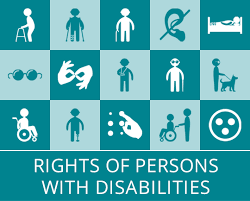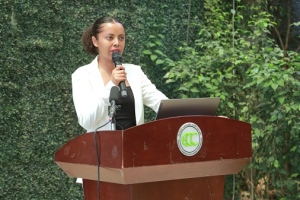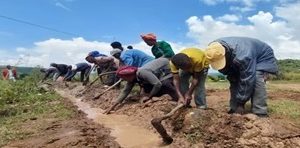
BY BETELHEM BEDLU
Although reports from the World Health Organization (WHO) and World Bank (WB) show that there are about one billion persons with disability that account for 15 percent of the global population, little is empirically known about the disability prevalence rates in low-income countries.
This is particularly true in the case of Ethiopia where a severe lack of data on disability statistics becomes more acute when taking into consideration the intersection of disability and gender.
The Ethiopian Central Statistics Agency (CSA) in collaboration with UN Women, a study entitled: ‘A review of national surveys on disability statistics’ was conducted to assess the existing national surveys and censuses undertaken by CSA in the last 20 years in order to quantify the disability prevalence rates in Ethiopia and workforce by gender and age disaggregation.
In doing the assessment, 37 recurring and onetime surveys were scrutinized for availability of any disability indicators. And only 30 percent of these 37 national surveys had indicators for disability while the remaining 70 percent did not have any indicators for PWDs.
The absence of disability indicators in many of these national surveys implies that the national disability statistics in Ethiopia are hard to come by as little attention has been given to the collection of disability data in the country.
Alemayehu Teferi, Household Surveys and Prices Statistics Directorate Director within CSA emphasized that the representation of PWDs in the national surveys and censuses has always been underreported.
The previous studies that the CSA conducted have shown a significant gap in representation of PWDs. He stated that the assessment has revealed the shortcomings in representing the right portion of PWDs as well as addressing the challenges identified through the studies due to various reasons.
The Sustainable Development Goals adopted a holistic approach that enables the inclusion of all vulnerable groups in the development agenda. Furthermore, it specifically addresses persons with disabilities on issues related to education, growth and employment, inequality, accessibility of human settlements and data collection. The challenge in effectively addressing the rights of persons with disabilities in part emanates from the lack of data on the matter.
As to the Director, this is the major reason for the UN Women to partner with Central Statistics Agency of Ethiopia to conduct the survey which aims at assessing the representation of PWD in the Ethiopian Labor Force Survey.
Compared to the disability prevalence rates reviewed for high-income and low income countries with available data, the disability prevalence rates estimated for Ethiopia are believed to be underreported. One reason for this is a lack of any national mechanism in place for regular collection of data on PWD.
PWDs are also underrepresented at leadership and policy levels in CSA and other similar organizations, further limiting their visibility and preventing their issues from coming to the forefront. For example, there is no disability statistics unit at CSA that can closely monitor the designing of national surveys to properly capture any available information on disability during interviews, the report indicated.
Another challenge depicted in the report is the collection of data on disability is a highly sensitive task as households do not like to answer questions concerning disability due to fear of stigma and societal prejudice linked to certain traditional notions about disability.
Moreover, in terms of their socio-economic status, persons with disability are less likely to participate in the labor market than those with no disabilities.
Women with disabilities are also particularly disadvantaged as their participation rate was only 46.6 percent. Similarly, PWDs experience significant disparities in the employment rate when compared to persons with no disability. Additionally, due to gender based violence, abuse and marginalization, there is a considerable difference in the employment rates of women with disabilities and men with disabilities.
However, these employment figures mask the harsh realities faced by persons with disabilities in the labor market as more than 90 percent of those with disabilities work in the informal sector with small earnings and with no social and legal protections.
PWDs are also a disadvantaged group in terms of literacy rates and the overall poverty status. Only one in four persons with disabilities are able to read and write while this is about 50 percent for persons with no disabilities. The literacy level is even lower for women with disabilities compared to men with disabilities.
An implication of such lower rate of persons with disabilities is that they are likely to end up in low skilled jobs in the labor market that do not allow them to escape poverty, as to the same report.
This situation of PWDs is evidenced by the fact that in 2016 the poverty rate for households with PWDs was 29.41 percent compared to 22.8 percent for those households with no persons with disability, showing nearly a seven-point difference.
Through the design and enforcement of appropriate programs, policies and laws, persons with disabilities can equally participate and benefit from endeavors. However, for this to be realized PWD need to be fairly represented in national surveys and ways to collect appropriate information about their conditions should be well incorporated into the national system of statistics.
To this effect, it is recommended to include persons with disabilities as part of national representative survey teams and improve the attitude of the people working in national representative surveys.
The other key challenge in collecting national data on disability is that of traditional taboo against disability in the society. Hence, there is a pressing need for better advocacy efforts, including mobilization of the public, to change social bias against disability and in the process also enable the collection of more accurate data on PWDs during censuses and surveys.
It is imperative to acknowledge that disability inclusion in labor force participation is an evolving issue, and there is still a need for mainstreaming disability inclusion in employment programs.
The Ethiopian Herald February 18/2021





